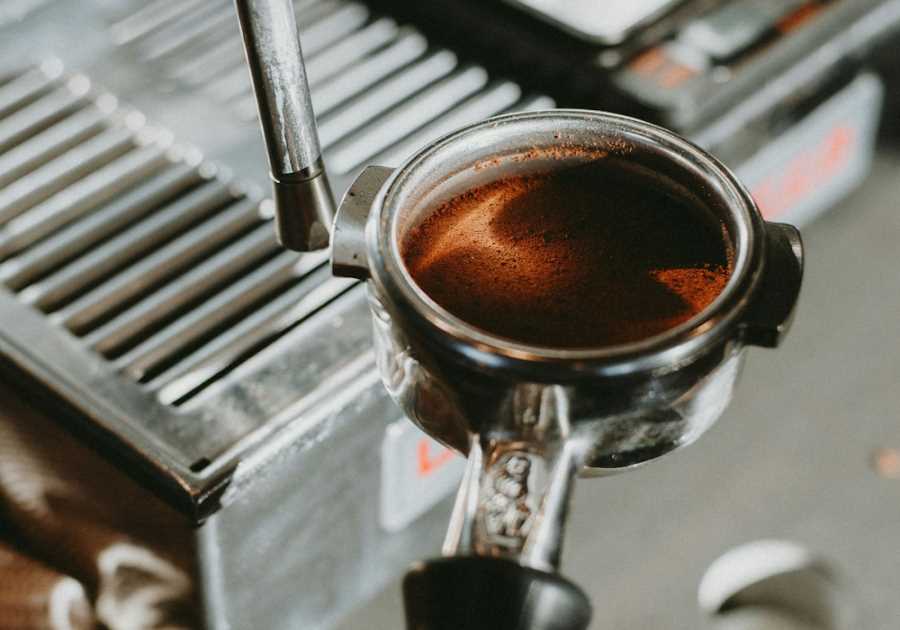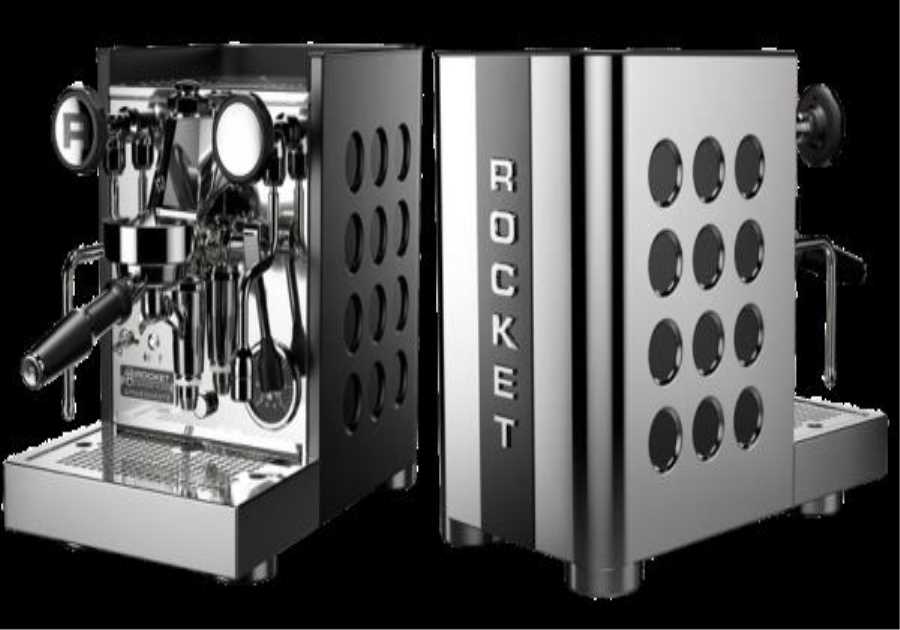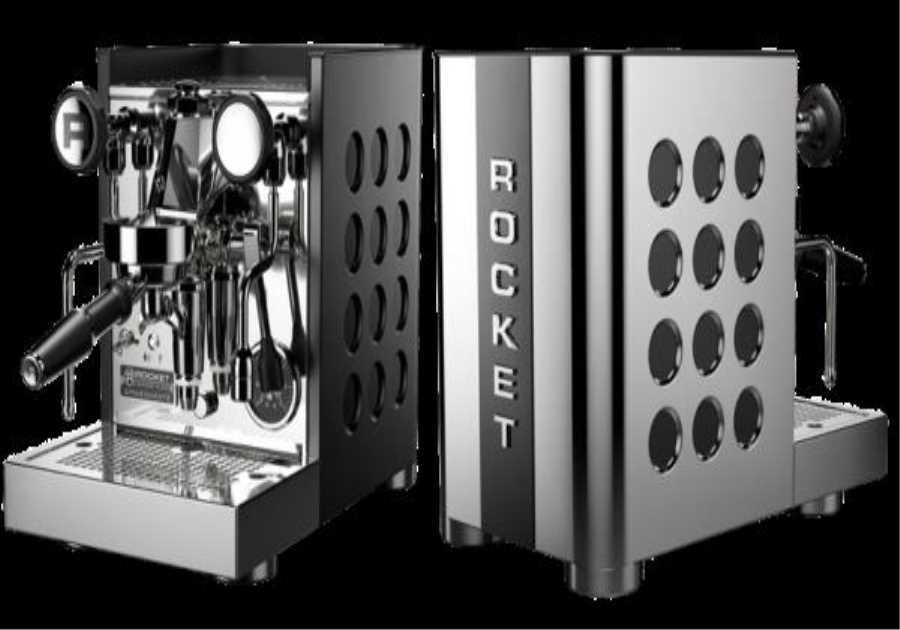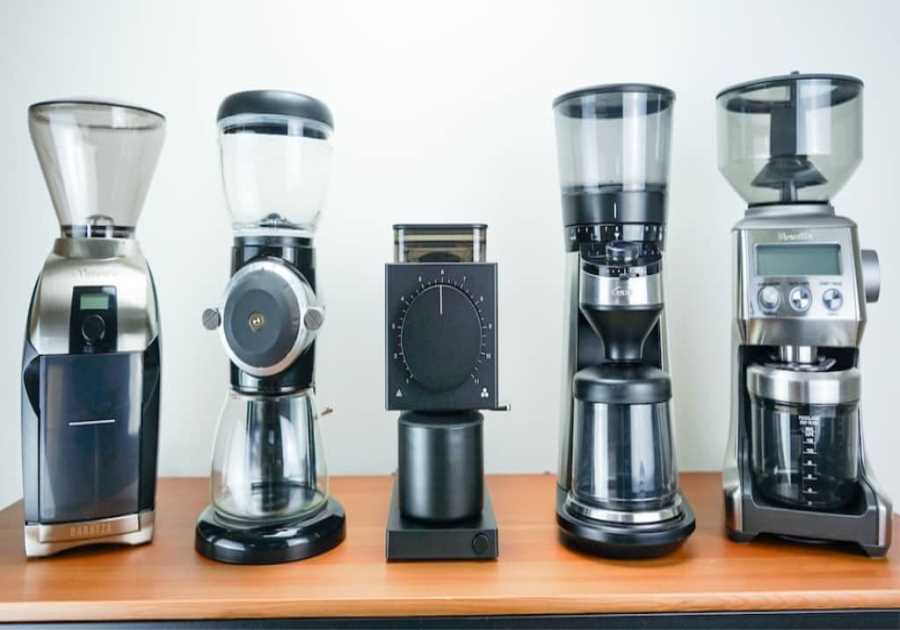Hopefully you landed on this post when searching for info on the new (at the time of writing, October 2023) Gaggia Espresso, although, I do think the choice of name is a bit of a problem for anyone trying to find reviews for a “Gaggia espresso machine” for obvious reasons.
I think Gaggia decided to use the “Espresso” name, simply because it was going spare. They launched the Gaggia Espresso in the 80s, it was one of the precursors to the Gaggia Classic, I've been trying to get my hands on one for ages, actually, as I think they look so cool, a bit like 80s & 90s Ferraris.
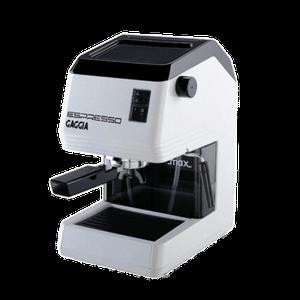
There are some similarities between the new Espresso and the original, they're both plastic fantastic, they both have proper portafilters, there are definitely some design similarities, they're both made in Italy, but fundamentally they're different machines.
I've still not managed to get hold of the original espresso, or an 80s Ferrari, but I have managed to get my hands on the new Gaggia Espresso.
So, could the Gaggia Espresso be the most game changing machine Gaggia has released since the 80s? Let's find out!
Gaggia Espresso Style / Deluxe Review

Features:
- 1900W Stainless steel thermoblock heater
- 1.2 L Water tank (side accessed)
- Pannarello steam wand, with hidden pro steam wand (shhh, that's a surprise)
- PID (temperature controller)
- Preinfusion (kind of)
- Standard portafilter with pressurised basket
- 30 Minute auto off
- Reprogrammable shot button
- 25 second warm up time
- Dimensions: 20 w x 25.5 d x 30 cm h. 3.3 Kg
Model Info:
There are three different versions of the Gaggia Espresso, which differ just by colour options, colour accents, drip tray cover material and cup warmer materials.
Style: All ABS plastic. Available in stone black & lava red.
Deluxe: Metal drip tray cover, metal cup warmer & rails. Available in Riverway Green & Storm Grey.
Evolution: (Not currently available in the UK) Metal drip tray cover, metal cup warmer & rails, some slightly different colour accents. Available in stone black & lava red.
My Observations:
Gaggia, you had me at PID!
OK, there's a lot more to it than that, but this is the main reason I think this is a game changing machine from Gaggia.
Obviously I'm not saying a PID is a game changer, there are many machines with PIDS, but not at this price!
What The Chuff is a PID?
PID is the abbreviation of Proportional Integral Derivative. Put simply (because I'm simple) its a controller that makes small changes to keep the temperature as close to the ideal as possible.
Most low cost machines that don't have PIDS, suffer from fairly big temperature swings. A PID dramatically shrinks down those temperature swings, by being able to predict when it needs to turn off or turn on the heater to keep the temperature as close to the pre-set temperature as possible.
Sage have been the only brand so far to use PIDS in all their machines, including their lowest priced machines (Bambino, Duo Temp Pro, Bambino Plus & upwards), and up until this point, it's been unheard of to find a PID in sub £200 machines.
If I was looking at multiple low cost machines, and one of them had a PID, if the machines were all fairly similar other than this, I'd go for the one with the PID without hesitation, simply because temperature stability is crucial for espresso quality, certainly for consistency, and a PID machine will be better for temperature consistency than a similar machine without one.
The PID isn't the only special thing about the Gaggia Espresso, though!
The second feature in terms of importance, in my opinion, is the portafilter.
Most sub £250 espresso machines have pressurized portafilters, and they're often monstrosities. My pet hate is crappy, light weight, mostly plastic portafilters, especially of the pressurised, dual walled variety.
This portafilter is really nice! I'd go so far as to say it's almost perfect, only almost, though. It does have stubby spouts, I'd prefer a proper metal splitter, and I think it's overly tall, they could have made the main body shorter and then there'd have been plenty of room to fit a splitter above the drip tray.
But, I'm being a bit picky, it's the nicest portafilter I've ever seen at this price point, it feels really nice in the hand, and most importantly, it's not pressurized.
As Sage do, they've used a standard portafilter, with pressurised baskets. What this means is you can just grab a 53mm standard basket and slap it in, if you
Why Do Baskets Matter?
The filter basket is the where the espresso is extracted, and standard traditional baskets are full of holes, basically a mesh bottomed basket. With standard baskets, the grind is very important, you have to “dial in” to get the grind size right for each different coffee you're using, to get as close to perfect extraction as possible.
Pressurisation, which is sometimes done in the basket, sometimes in the portafilter itself, is done by limiting the flow through the basket or the portafilter. What it really does, though, is to make the espresso look the part, in that it mimics the crema that we associate with a great shot of espresso.
Pressurised baskets or portafilters are fine for “normal” coffee beans, normal meaning big brand or generic brand coffee beans, with a best before date but without a roasted on date on the bag.
If you want to use freshly roasted coffee, though, you'll need to dial in.
If you don't, it's quite possible to buy what should be a stunning, high quality freshly roasted coffee, and find that it tastes awful, simply because this kind of coffee is so much more vibrant, it has bigger flavours, when dialled in it can taste great in a big way, when not dialled in it can taste bad in a big way. This really isn't a problem with commodity coffee beans, they tend to just taste how they taste.
So the fact that this machine comes with a standard portafilter is brilliant, and it's easy to get hold of 53mm standard baskets, these ones will fit, although I do wish they'd have decided to bundle them with the machine.

Pre-Infusion
The Gaggia Espresso has a form of Pre-infusion. What pre-infusion actually is, depends on who you speak to really, but really it just means water introduced into the ground coffee before the main brew water.
Where pre-infusion comes from, though, is commercial plumbed in espresso machines. Introducing water to the basket at line pressure before the pump is engaged means a more gentle introduction to the extraction, and less sudden stress to the puck which is more likely to cause channelling, which is where pressured water makes its way through parts of the puck faster, leading to uneven extraction.
The kind of pre-infusion Gaggia are using here is the same as with the Gaggia Carezza, where the pump is engaged at full pressure for a second or so, dispensing about 15ml of hot water, then pausing for a couple of seconds, and then continuing.
I do prefer the low pressure pre-infusion that you get with all Sage coffee machines for example, because in theory the fact that the water is hitting the coffee at full force kind of does away with the point of pre-infusion at all, as any damage to the puck is likely to have already been done at that point.
But, I do think some form of pre-infusion is probably better than none, and if you use a 53mm puck screen, like this, it'll help this pre-infusion to do a better job.
The Thermoblock
Unlike the Gaggia Classic, and the original Gaggia Espresso, the latest Gaggia Espresso has a themoblock, and not a brew boiler.
The difference is that brew boilers have either an internal or external element, and heat the water in the boiler to then be used for espresso, and also for steam by first heating the boiler to a higher temperature. Thermoblocks on the other hand are metal blocks, with a cut out coil shape, through which very small volumes of water are continually pumped through, being heated as it passes through.
Most other cheap espresso machines, including the DeLonghi Dedica, Smeg ECF01 and various others, and most bean to cup coffee machines, use thermoblock heaters.
The main difference with the thermocoil on the Gaggia Espresso, is it's really powerful! This is like a turbo charged lightweight Mazda MX5, it really has quite a bit of power, with a 1900W thermoblock, vs the 1350W thermoblock in the Dedica and Smeg machines for example.
What this means, is fast heat up time (25 seconds), fast steam ready time (also about 25 seconds), and decent steam power.

Programmable Shot Button
If you want to use the Espresso just like the classic, for example, you can simply press the shot button to start, and press it again to stop. If you prefer, you can press and hold the shot button, until you have your desired shot volume, then let go of the shot button, and you've setup the “memo function”, meaning that the pump will run for the same time from now on when you press the shot button, unless you press the shot button again to stop it early.
If you want to re-set the shot button, you just repeat the process, and if you want to disable it, you simply press and hold the on/off button for a few seconds.
Steaming milk.
At first glance, the Gaggia Espresso has a panarello wand, the same kind of steam wand you'll find on most similarly priced home espresso machines. They’re great for old school big bubbled, stiff foam cappuccino, and it does that very well. The 1900W thermoblock delivers plenty of steam power.
But if you slide that off, and remove the connector, the pipe underneath isn't just a normal steam pipe. They've deliberately made it longer than most, and they've rounded the pipe at the end to form a single holed tip, instead of just being a cut off pipe. So it's basically a slim, pro steam wand, and powered by the 1900W thermoblock, it delivers nice steam power.
It's more flexible in terms of steam position that most other low priced machines, too. The wand spins 360 degrees, but it's also articulated, meaning it’ll pull out from the machine, giving you more space.
Unlike the Classic, and the original Espresso, there isn't finite steam power, in fact theoretically, you could just keep steaming until the water tank empties, as the pump and the thermoblock deliver a continuous supply of steam.
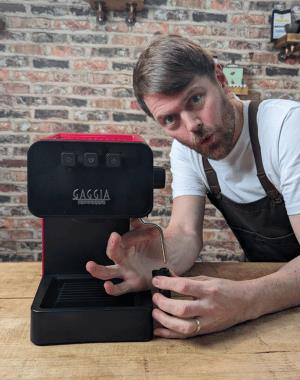
Slide-Out Drip Tray
The drip tray has approx. 275ml capacity, not half bad for a little machine like this, but it's also quite tall, making the max cup height around 7.5cm, which isn't too bad unless you're using brew scales, of course.
If you slide out the drip tray, however, they've put a flat bottomed platform at the bottom which is perfect for brew scales, or for fitting bigger cups, and you just slide the drip tray back on after pulling the shot, so it catches the drips.

Side Accessed Water Tank
This is something I really like about this machine. What do you mean “small things please small minds”, how very dare you? ;-). OK, fair enough, but to me, the side of the machine is the best place to put a water tank on a traditional portafilter machine.
If you put it behind the drip tray as with the classic, that's OK, but it's a bit of a faff to take out, having to move the steam wand out of the way, move the drip tray, unhook the solenoid pipe (with the classic) and so on. Having the water tank at the back means you need to access the top of the machine to fill it in situ, or pull it towards yourself and spin it around to remove the drip tray.
So putting it on the side makes perfect sense to me, and OK it's only 1.2L, but it's so easy to access, I really don't think it matters how big it is.
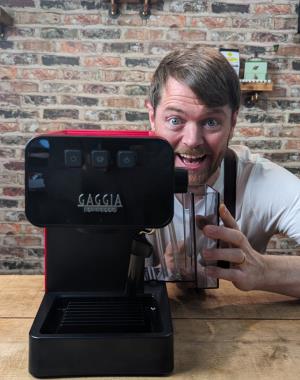
Designed & Manufactured in Italy
The one thing that really stands out with this machine, when I've been using it, is that I can tell it's made in Italy. Well ,”Made in Italy” is proudly stamped into the casing ;-), so it's hard to miss. But what I mean is that it just looks and feels well designed and well built. Yes it's all plastic, but you can't deny the design and build quality.
ESE Pods
For anyone who wants to use ESE pods (Easy Serve Espresso) you can, you just slap the pod in the single basket and put the pod adapter thing on top, simple. If you're not familiar with ESE pods, they're like tea bags for pre-ground coffee. They're not something I would use personally, but if you're someone who usually uses supermarket coffee, you'll probably find they don't taste much different from espresso made from pre-ground coffee, and they're good to have if you're in a rush.

Negatives?
OK, I've raved about this little machine so far, I do think it's incredibly good for an espresso machine at this price, but I want to ensure that this is a warts ‘n all review, so that my enthusiasm for the good bits doesn't confuse people into thinking this is the perfect espresso machine.
I think it's probably about as perfect as you'll get for this price, but it's not quite perfect – although, I can point out imperfections in machines costing over 20 times the price, to be fair. The La Marzocco Linea Mini, for example, is an amazing machine, but even that isn't without it's imperfections.
Water Pressure
As is often the case with lower cost machines, the water comes through the shower screen with some force, and gives the puck of coffee a bit of a kicking ;-).
As I mentioned earlier, it does have preinfusion, but it's at this same full force, so I can't help but think that unless you use a puck screen, this pre-infusion is probably not all that helpful really.
My advice, is to use a puck screen, you can get one for a few quid, and it'll protect the puck from this jet of water coming from the shower screen.
No Solenoid
A 3 way solenoid valve fires off the excess water and pressure from the basket into the drip tray very quickly, as soon as the shot has finished pulling. This means you end up with a slightly drier puck, and it means that if you choke the machine (too fine a grind, no espresso flows) it doesn't matter, you can just release the portafilter straight away.
The Gaggia Espresso has a brew valve instead of a solenoid, so the pucks aren't quite as dry, and if you do choke the machine you need to give it a minute before releasing the portafilter, or you may encounter “portafilter sneeze” as I have several times on various machines, it's not pretty!
It's worth pointing out here that you won't find a solenoid on other similarly priced machines, in fact some previous versions of the classic didn't have the solenoid, and the Sage Bambino and Duo Temp Pro also don't have solenoids.
Conclusion. Best Espresso Machine From Gaggia Since the 90s?
If you've read my other content, you'll know that I share my honest opinion about the machines I review, and I like to give a full warts ‘n all account of everything I found out about the machine, and the reason for this is that I'm simply trying to give people as much info as I can, so that they can decide if the machine in question is the best choice for them.
There really isn't any such thing as the best espresso machine, or the best anything for that matter, it's very subjective, and hopefully what I've done with this review is to paint a clear enough picture to allow you to decide if this is the best option for you.
In my opinion though, when it comes to traditional espresso machines from Gaggia, this is the most exciting thing to come from Gaggia since the Classic. It's a PID espresso machine, made in Italy, with a standard portafilter, for under £200, I call that a game changer!
The post Gaggia Espresso Style & Deluxe. Review of a Gamechanger. appeared first on Coffee Blog.
By: KevTitle: Gaggia Espresso Style & Deluxe. Review of a Gamechanger.
Sourced From: coffeeblog.co.uk/gaggia-espresso-style-deluxe-evolution-review/
Published Date: Mon, 23 Oct 2023 15:54:49 +0000
Always check our latest articles at...
https://coffeecutie.com/espresso

